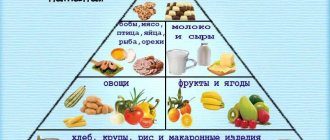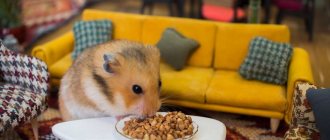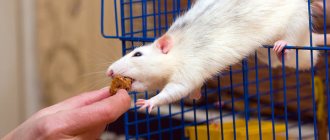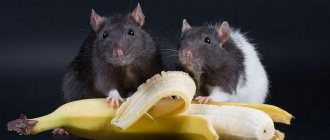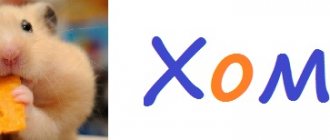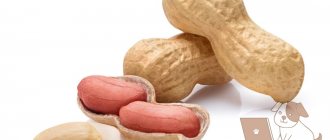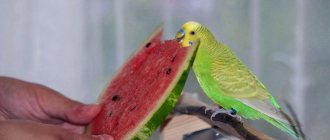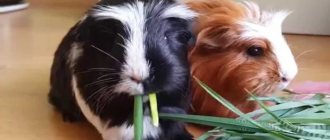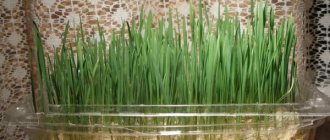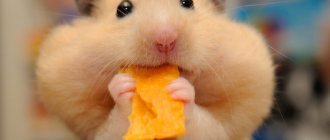- home
- Parrot
- Feeding
05/11/2019 The menu for a pet parrot should be balanced and varied - you should not feed the bird the same set of products. Not only fruits and vegetables, but also grains allow you to diversify your feathered pet’s diet. Millet is considered the most valuable for the bird's body. But is it possible to give parrots millet? As you know, this cereal is made from millet, but does this grain lose its beneficial properties during processing? Answers to frequently asked questions when creating a menu for a parrot are given in the article.
Can budgerigars eat millet?
Feeding millet to birds is not only prohibited, but also recommended. But, of course, when preparing a poultry’s diet, it is worth taking into account its personal taste preferences. If a budgerigar does not like millet or any other product, and he basically ignores it in the feeder, you should not force the bird to eat it. Products that the pet did not like, i.e. He doesn't eat them, so they should be excluded from the menu.
However, cases of a parrot refusing millet cereals are extremely rare. For a bird it is the same as millet. Therefore, you can feed parrots with this cereal according to the same scheme as millet.
Dry food must be present in a parrot's daily diet. The grain mixture should include 4-5 varieties of cereals, but the main component should be millet or millet. With an optimal ratio of proportions, the volume of millet or millet is 50-60% of the total mass of the mixture.
Frequency of millet feeding
You can feed parrots with millet every day, and this type of food can be given in dry, sprouted and boiled form. There are no restrictions - feeding millet is allowed throughout the life of the bird. Most parrots readily eat this grain, so it can make up a large part of the grain mixture for daily feeding. However, this type of grain should not be the only one on a parrot's menu. In addition to it, the diet includes another 4-5 types of cereals, as well as fresh vegetables, fruits and herbs. Feeding one type of grain will not provide the bird with all the nutrients it needs, and its health will deteriorate.
What kind of millet should be
It is allowed to feed budgies only high quality millet. It is easy to distinguish good cereals from low-quality cereals by appearance.
The grains should be:
- Correct form, i.e. rounded;
- large size;
- pale yellow;
- glossy;
- sweetish in taste.
Only such millet cereals will benefit the parrot’s body. You should not give your pet cereal if its grains:
- Gray or dark shade;
- dull;
- have foreign impurities.
How to choose
According to all the rules, the majority of the grain mixture for birds, namely 60%, is grain. You need to choose it carefully. Is it possible for parrots to eat raw millet and how best to serve it, we will tell you further.
Each grain must have the correct rounded shape. The color is pale yellow, the surface is glossy. To taste, such porridge should have a sweetish aftertaste.
On a note! Gray crushed cereal with impurities is not suitable for feeding a parrot. Peeled, without husk, it quickly oxidizes, and birds simply refuse it.
Is it possible to feed a parrot millet or buckwheat?
It is millet that should be given to the bird in dry form - it is advisable to feed the pet millet cereal only in the form of porridge or sprouted grains. Raw millet, peeled from husks, tends to oxidize, which affects its taste and healthiness. The parrot may well refuse such a product, and he will do the right thing.
As for buckwheat, it is also among the recommended healthy foods. It is better to give it to the parrot unrefined, as grain feed. On the eve of serving the bird, buckwheat is soaked and left overnight, then washed thoroughly and only then presented to the bird.
In addition, buckwheat can be given to your parrot in the form of porridge. Cook only with water or milk. It is important to prevent the cereal from boiling - the porridge should be crumbly. Boiled grains lose most of their usefulness and nutritional value.
The approximate daily dose of millet porridge, buckwheat, rice or any other is 21 g.
To include or not in the diet of a wavy bird
A significant part of the diet of budgerigars consists of grain mixtures, where the key component
This is precisely millet - approximately 60% of the total share of the product. This means that a parrot can and should be fed millet , but with some reservations.
The grain mixture is the base. It must be included in the pet’s diet. But in addition to dry food, birds need supplements: fruits, vegetables and other greens. Otherwise, the health of the animal can be undermined: the immune system reacts negatively to the lack of nutrients in the body.
Millet has nothing to do with wheat. The product is made only from millet - a cereal. The main suppliers of the latter are Eurasia and North Africa. In Russia, only 2 types of millet out of 400 known are grown : common - for the production of millet, and capitate - used as animal feed.
Sprouted millet: benefits and harm for parrots
There are many beneficial aspects of a parrot’s consumption of millet cereals (especially in sprouted form). These include the following:
- Thanks to the high nutritional value and calorie content of the cereal, the growth and development of the bird is accelerated, the parrot's immunity is strengthened and overall health improves.
- Thanks to the iron, zinc and amino acids contained in millet, the appearance of the bird improves - the plumage becomes bright and thick.
- The functioning of the gastrointestinal tract improves.
In addition to the already mentioned substances contained in millet, this cereal is rich in:
- Belkom;
- vitamin B;
- vitamin E;
- calcium;
- magnesium;
- macroelements;
- microelements;
- phosphorus.
But with all the extensive positive properties, this product is not without negative influence. If the product is prepared incorrectly, it causes digestive problems and disruptions to the gastrointestinal tract. If stored incorrectly, it will become bitter and the bird will not eat it. Overeating millet cereals in any form is fraught with the bird gaining excess weight.
In addition to sprouted millet, it is recommended to include sprouted wheat in the bird’s menu - it is also beneficial for the bird’s body.
Sprouted cereals should be supplemented with the main food. This feeding is especially important in the spring and winter seasons - it will compensate for the lack of vitamins and other essential substances in the pet’s body. Despite its great benefits, sprouted millet is a difficult product for birds to digest. Therefore, its maximum permissible daily dose is 2.5 g.
In what form can millet be given?
Millet cereals for feeding birds must be selected carefully. A low-quality product can lead to poisoning and even death of the bird. At best, the parrot will simply refuse to eat it.
The grain, suitable for feeding birds, has a large particle size, a uniform light yellow color and a slightly glossy surface. When cooked, it tastes sweetish. Cereals that are gray in color, covered with plaque and dust, of uneven size, with a musty odor, an admixture of dirt, signs of spoilage, affected by mold and pests are not suitable for feeding parrots.
Millet is fed to parrots in 3 ways: in the form of dry cereal, in sprouted form and in the form of porridge. Sprouted grains and cereals are considered the most useful. It is recommended to give dry cereal in minimal quantities.
Groats
Millet cereals come in different varieties. It is allowed to give the parrot one of the following types of millet:
- polished (with removed flower films, embryos and fruit seed coats);
- peeled (without shells, but with preserved floral films);
- crushed.
Polished cereals are the least useful. The purified one retains more useful substances, but it is inferior to the crushed one, which is considered the most nutritious. If stored improperly, purified cereal quickly oxidizes and becomes unsuitable for feeding.
Sprouted
Millet can be given to a parrot in sprouted form. This food is rich in vitamins, in particular vitamin E, which has a beneficial effect on reproductive function. Therefore, such feeding is especially useful during the breeding season.
The grain for germination is washed and soaked for 12-15 hours in cold water. After this, it is laid out on moistened gauze, spread on a saucer, and placed in a warm, bright place for 7 days. After the sprouts appear, the product is fed to the birds. The most useful grains are those with sprouts 6 mm long.
Attention! Sprouted grains are heavy food; Overfeeding may cause digestive problems. Therefore, parrots are given no more than 2.5 g of this food per day.
Porridge
Porridge is prepared from crushed or polished cereals. To prepare the dish, choose clean grains of uniform yellow color, without darkening, gray coating or impurities. Millet porridge is easier to digest than raw grain. Nutrients from it are absorbed in full. Therefore, porridge is recommended to be given to sick and weakened birds, as well as parrots that have problems with the digestive tract. Porridge can be made from oxidized cereals that have become bitter. When cooked, harmful substances are destroyed and the bitterness disappears.
What types of millet cereals are suitable for poultry diet?
Of all the possible types of millet cereal (in industrial processing), only three are beneficial for birds. The following types of cereals are recommended and allowed for consumption:
- Sanded (films and shells are completely removed from the grains);
- peeled (an alternative name is dranets; the grains are stripped of only the shell);
- crushed (grains are crushed).
The polished look is the least useful. During processing, the grains lose most of their properties. Simply refined grains retain more nutrients, but are still inferior in usefulness to crushed cereals. Crushed cereals are the healthiest. It is used to prepare liquid porridges. This food is suitable even for birds with diseased digestive organs.
Is it possible to give millet to a parrot?
Most of the parrots' daily diet is grain mixture. The main component in it is millet - up to 60% of the mixture. Since millet is a processed millet, it can also be given to parrots. However, birds should not be fed just one type of grain; The grain mixture should include 4-5 types of cereals, and the share of millet cereals among them should not exceed 50-60%.
During processing, millet loses some of its beneficial properties, so it is not recommended to completely replace millet with it. However, feeding your parrot millet is beneficial. Due to its high calorie content, this cereal is excellent for feeding sick and weakened birds. It normalizes digestive function and improves the condition of the feathers. High protein content has a good effect on the development of chicks. However, an excess of this food in the diet can cause obesity.
How to cook millet for a parrot
Millet is served to the parrot in the form of porridge. To prepare it correctly, you need:
- Rinse the cereal.
- Pour boiling water over the grains and leave them there for 10 minutes.
- Cook until crumbly.
If you need the product urgently, you can prepare it in a simpler and faster way - just soak the cereal in boiling water and wait 15-20 minutes.
Preparing sprouted grains is also very easy. To get a healthy fresh product, you need:
- Rinse the cereal.
- Soak the grains in warm water and leave for half a day (an alternative is to soak in cold water and leave for 15 hours).
- Rinse the cereal again.
- Spread cheesecloth on a flat plate.
- It is advisable to place the grains on gauze in one layer (maximum thickness – 20 mm).
- Place the plate in a well-lit place with a warm atmosphere and leave it there for a week.
After 7 days, the cereal will germinate. It is better to give the bird sprouts 6 mm long - the benefits of such sprouts are maximum, they are a kind of vitamin concentrate.
Sprouted grains
The product in this form is a rich source of vitamin E.
The latter have a beneficial effect on the reproductive system of animals and also reduce the activity of free radicals. Therefore, during the breeding season, sprouted millet will be especially useful.
Rinse the cereal well first and then soak in cool water for 12-14 hours. The grains are placed on gauze soaked in warm water.
It is better to use shallow dishes as a container. Then the millet is placed on the windowsill for about a week.
The place should be warm (above +20 ° C) and bright (south or east). As soon as the sprouts reach a length of 5-7 mm, they can be fed to the animal.
Grains in this form are heavy food for birds. Exceeding the limit can lead to serious gastrointestinal problems. Medium-sized parrots should be fed no more than 2.5 g of sprouted seeds per day. Dosages for individual species should be consulted with an ornithologist, breeder or veterinarian.
